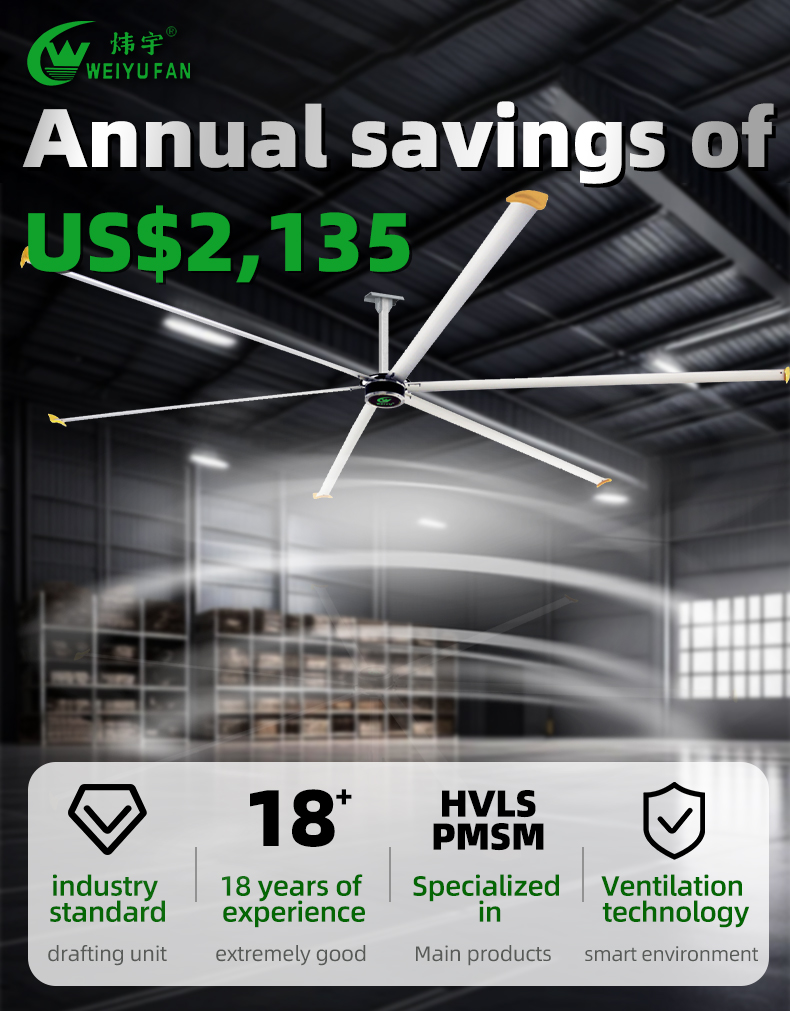Šiame amžiuje, kai operacijos ir našumas yra daugumos verslų dėmesio centre, didėja spaudimas mažinti su tuo susijusias išlaidas. Tai galima pasiekti įvairiais būdais, o vienas iš jų yra pramoniniai ventiliatoriai. Šios puikios mašinos daro daugiau nei tik gerina oro cirkuliaciją, nes jos taip pat maksimaliai sumažina energijos sąnaudas. Šiame straipsnyje mes pažvelgsime į tai, kas skatina pramoninių ventiliatorių augimą, susijusį su energijos taupymu ir geresnėmis darbo sąlygomis darbuotojams.
1. Pramoninių Ventiliatorių Apibrėžimas
Oro judėjimas iš taško A į tašką B apima didelius oro kiekius, o pramoninės klasės ventiliatoriai, įmontuoti šiuolaikinėje gamyboje, žemės ūkyje ar HVAC taikymuose, visi integruoja ašinius arba centrinius ventiliatorius į savo dizainą. Tačiau pagrindinė tokių ventiliatorių paskirtis yra gana paprasta - tai ventiliacija, aušinimas ir oro cirkuliacija procesams, kurie būtini, kad būtų palaikomos priimtinos fizinės sąlygos.
2. Energijos Efektyvumo Privalumai ir Išlaidų Mažinimas
Kalbant apie pramoninius ventiliatorius, viena iš naudingiausių savybių yra energijos efektyvumo galimybės. Šie ventiliatoriai leidžia HVAC sistemoms veikti rečiau, gerinant oro judėjimą, taip padedant taupyti energiją. Pasak tyrimų, įmonės gali sumažinti energijos išlaidas iki 30 procentų, jei naudoja energiją taupančius pramoninius ventiliatorius. Technologijų evoliucija leido šiuolaikiniams ventiliatoriams būti aprūpintiems kintamo greičio pavaromis, kas reiškia dar didesnį energijos taupymą, nes ventiliatoriaus greitis automatiškai nustatomas pagal poreikius.
3. Bendros vidaus oro kokybės gerinimas
Pramoniniai ventiliatoriai taip pat yra naudingi kitaip – jie gali padėti užtikrinti vidaus oro kokybę. Kiekvienai darbo aplinkai reikia švaraus oro, o vėdinimas padeda tai pasiekti pašalinant teršalus, perteklinį drėgmę ir nemalonius kvapus. Todėl per pramoninius ventiliatorius įmonės gali pasiekti nuolatinį šviežio oro srautą, kuris optimizuoja darbuotojų sveikatą. Be to, efektyvesnė darbo vieta gerina darbuotojų moralę ir taip didina įmonės veiklos produktyvumą.
4. Dizainas ir bendras pritaikymas
Pramoniniai ventiliatoriai pasižymi universalumu ir gali būti sukurti pagal konkrečios pramonės reikalavimus. Nuo didelių gamybos įmonių iki mažų žemės ūkio patalpų, yra įvairių ventiliatorių tipų ir konfigūracijų. Ši lankstumas padeda verslams patenkinti savo specifinius oro judėjimo poreikius produktyviausiu ir efektyviausiu būdu.
5. Pokyčiai pramoninių ventiliatorių procesuose
Kaip pramonė vystosi, taip pat vystosi ir technologijos, susijusios su pramoniniais ventiliatoriais. Ventiliatoriai tampa ekologiškesni, nes rinka juda efektyvumo tendencijos link. Gali būti, kad ateityje ventiliatoriai taps protingesni, juos sujungus su IoT, taip leidžiant juos stebėti per internetą ir keisti jų nustatymus pagal aplinką realiuoju laiku. Dėl žalesnių tikslų pramoninių ventiliatorių dizainuose taip pat bus akcentuojamos tvarios medžiagos, kurios padės sustiprinti jų našumą.
Apibendrinant, pramoninių ventiliatorių energijos efektyvumas nėra klausimas. Jei korporacijos taikys šias sistemas savo veikloje, jų veiklos išlaidos ir bendrosios sąnaudos taip pat bus mažesnės, nes darbas bus atliekamas šiek tiek švaresniu būdu. Šių sistemų perspektyvos energijos naudojimo ir kenksmingų medžiagų emisijos atžvilgiu dabartyje ir ateityje atrodo dar labiau žadančios, todėl pramoniniai ventiliatoriai tampa būtinybe verslo aplinkoje.
 EN
EN
 AR
AR
 BG
BG
 HR
HR
 CS
CS
 NL
NL
 FI
FI
 FR
FR
 DE
DE
 EL
EL
 IT
IT
 KO
KO
 NO
NO
 PL
PL
 PT
PT
 RO
RO
 RU
RU
 ES
ES
 SV
SV
 ID
ID
 LT
LT
 SR
SR
 UK
UK
 VI
VI
 HU
HU
 TH
TH
 TR
TR
 FA
FA
 MS
MS
 HY
HY
 AZ
AZ
 KA
KA
 BN
BN
 LO
LO
 LA
LA
 NE
NE
 MY
MY
 KK
KK
 KY
KY


 Internetu
Internetu